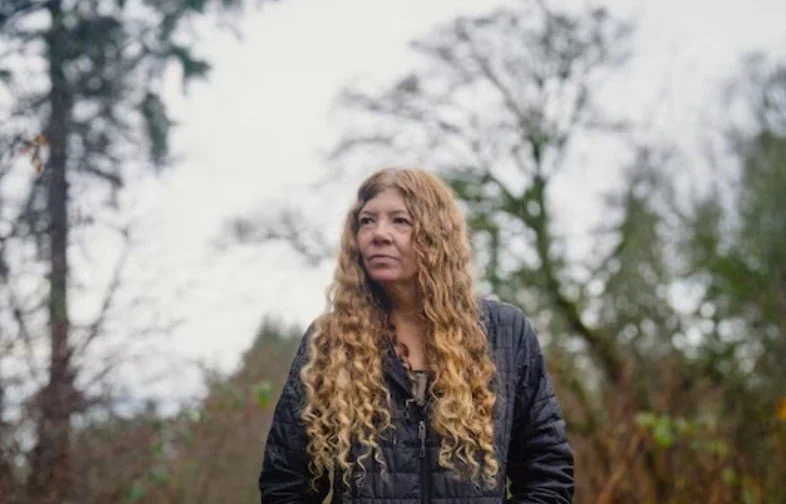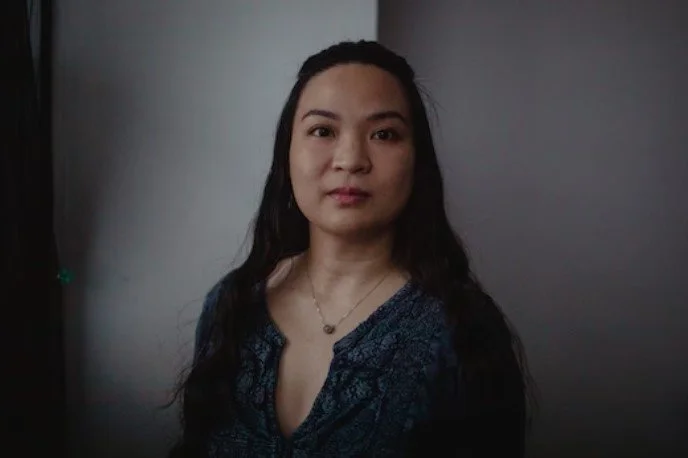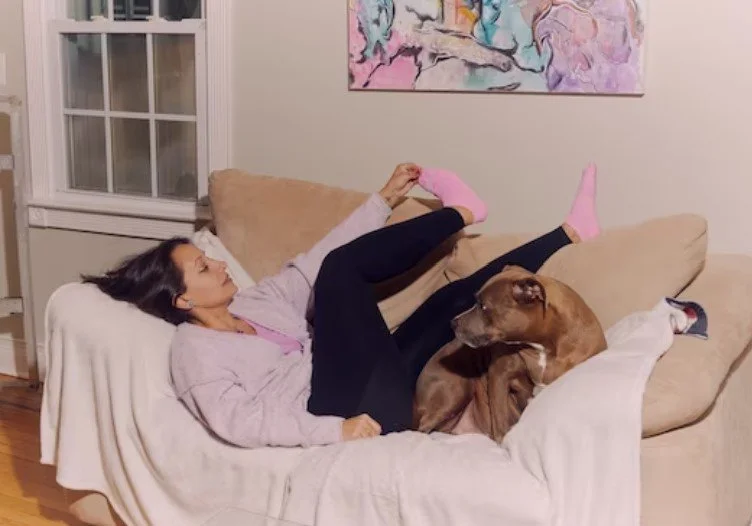For long covid fatigue, a strategy called ‘pacing’ helps, but at a cost
Amanda Morris Washington Post February 7th 2023
__________________________________________________________________________________________________________________________________
What is it like to live with the chronic fatigue of long covid?
It feels like dragging your body through wet cement, says Judy Schaefer, 58, a once avid hiker who lives in Seattle.
It’s knowing that simple tasks, like showering or cooking dinner, will be exhausting, says Alyssa Minor, 36, a physiotherapist in Calgary.
It’s trying to exercise and instead, landing in the ER, says Harry Leeming, 31, of London.
Judy Schaefer, 58, at her home in Seattle, Wash., was an avid hiker before developing long covid after an infection in 2020. (Jovelle Tamayo/ forThe Washington Post)
Experts say the extreme fatigue experienced by many long covid patients has a name: myalgic encephalomyelitis (ME/CFS), a condition previously known as chronic fatigue syndrome. Researchers estimate that about half of people with long covid have developed ME/CFS.
There is no known cure for ME/CFS, but some experts say a complicated lifestyle change can help manage some of the symptoms.
It’s called “pacing.”
Pacing is an “activity management” strategy, which requires people to carefully limit their daily activities, reduce their energy expenditureand track their symptoms.
But pacing is difficult. It often requires scaling back on mundane tasks that most people take for granted, like rinsing dishes or chopping vegetables. And it means finding ways to reduce energy expenditure and effort — such as creating water and snack stations around the house to reduce trips to the kitchen. Even showering or picking children up from school can be debilitating for those with ME/CFS.
Schaefer at home with her dog while she meets with a group of other women with long COVID via Zoom. (Jovelle Tamayo for The Washington Post)
While pacing can make a huge difference in quality of life for someone with long covid, it also comes with a cost. Pacing often means cutting back on both work and favorite activities like cooking, walking the dog or socializing with friends. And it can represent a challenging reversal for people who, until very recently, have been accustomed to leading busy, active lives.
“I tell people to figure out what they can do every day without struggle,” explained Ravindra Ganesh, a physician and medical director of Mayo Clinic’s Post-COVID-19 Care Clinic.
People with long covid who have tried pacing say it has helped them return to a semblance of normalcy.
Daria Oller, 38, of Lincoln Park, N.J., said that after getting covid in March 2020, she felt winded all the time, and the fatigue sometimes left her unable to get up or even speak.
Daria Oller, 38, who has long covid, takes a break on a gymnastics mat in her living room in Lincoln Park, NJ. (Evelyn Freja for The Washington Post.)
To cope, she started using a pacing strategy to manage her activities and energy level. She gave up running and regular dance classes and scaled back date nights with her husband and outings with friends. She also scaled back at her job as a physical therapist, giving up clinical work and now leads education sessions.
She plans her clothing for a week at a time, to minimize effort later. These and other pacing strategies have reduced her symptoms, and leave her with just enough energy to keep working and enjoy the occasional fun activity.
“My symptoms weren’t constant anymore whereas I previously had been short of breath almost all of the time,” Oller said. “It helped to give me a little more sense of control.”
Oller keeps essential items close by to conserve her energy. (Evelyn Freja for The Washington Post.)
A lesson from longtime sufferers
While pacing is a new strategy for those with long covid, it’s been used for years by people who suffer from ME/CFS. The cause of ME/CFS is not understood. Experts believe the disease can be triggered by illness, infection or stress.
Before she learned how to pace correctly, Kaia Arrow, 32, of Toronto, often needed to stay in bed and could rarely leave the house.
Arrow has lived for 12 years with ME/CFS, which was triggered by a post-surgical infection. She said that over the past few years she has gotten better at pacing, and now she can usually leave the house a few times a week and has started cooking again every few weeks.
“Pacing made it so that I could predict what I could do, like on a small level for the first time in over a decade,” said Arrow. “I can cook for my husband. I can cook for my friends. Not frequently. But, that’s more than I could do before.”
Kaia Arrow, 32, has lived with ME/CFS for 12 years. Scaling back activities and conserving energy has helped her live a more normal life. ( (Chloë Ellingson/For The Washington Post)
The evidence for pacing
“Pacing is being active when you’re able, and resting when you’re tired, rather than pushing through symptoms,” said Jaime Seltzer, director of scientific and medical outreach at #MEAction, a nonprofit advocacy group for people with infection-associated chronic illness.
The effectiveness of pacing for long covid patients with ME/CFS hasn’t yet been widely studied. But the World Health Organization recommends the strategy for long covid patients who experience a worsening of symptoms after activity, which is known as post-exertional malaise.
While pacing is gaining acceptance, patient groups and doctors say more study is needed, and some experts remain divided about the best treatment approach. One of the largest studies to include pacing, published in the Lancet, found that cognitive behavioral therapy and graded exercise therapy may be better options for some patients. Graded exercise therapy involves a gradual increase in activity over time, but some doctors think it’s too risky for ME/CFS patients.
How long covid is accelerating a revolution in medical research
For people with ME/CFS, even holding a phone can be a struggle. Arrow wears finger braces to give her hands more support. (Chloë Ellingson/For The Washington Post)
The study has been widely criticized for its methods. Another analysis of 18,000 survey responses showed that pacing had the highest reported benefit (44 to 82 percent of patients,) while cognitive behavioral therapy helped less (8 to 35 percent). Graded exercise therapy had the highest negative response (54 to 74 percent).
Peter White, the lead author of the Lancet report, said that he stands by the results of the study. He noted that studying recovery or improvement in ME/CFS patients can be difficult because it often relies on subjective criteria. Another issue, he said, may be that some patients aren’t receiving therapy that has been correctly tailored to patients with ME/CFS.
Both the Centers for Disease Control and Prevention and the British National Institute for Health and Care Excellence updated their guidance in the past decade to remove graded exercise therapy as a recommended treatment for ME/CFS.
A wheelchair customized with details such as a pink heart sits near the entrance to Arrow’s apartment. (Chloë Ellingson/For The Washington Post)
Rethinking what recovery looks like
One of the biggest challenges of pacing is that it contradicts popular thinking around recovery. For many people with an illness, the goal is to rebuild stamina through physical therapy and gradually increase activity levels over time.
But experts say that approach can result in a debilitating “crash” that leaves patients in even worse condition.
The fatigue that Minor, the Calgary physiotherapist, experienced after she caught a mild case of covid in January 2021, was so bad that she couldn’t get through a single shift at work without feeling like she was “hitting a wall.” Simple chores at home left her feeling exhausted and dizzy.
The post-exertional malaise she described is a defining quality of ME/CFS. Even minor levels of activity can cause a worsening of symptoms, or “crash.”
Arrow keeps a foldable stool in the bathroom to minimize the time she spends standing. (Chloë Ellingson/For The Washington Post)
A dysfunctional energy system
Studies show that people with ME/CFS don’t have the same response to physical exertion as healthy individuals.
In one small study of 22 people with ME/CFS, researchers tested people’s capacity for activity by measuring oxygen intake and how hard they could pedal while they pushedthemselves on a stationary bicycle.
In the study, participants cycled to the point of exhaustion, then repeated the exercise test 24 hours later. On the second test, the researchers found the participants could not match the performance they had put in the day before, even when putting in maximum effort. And their bodies’ ability to use oxygen and deliver it to cells had declined significantly.
These tests, called cardiopulmonary exercise tests, have been performed on people with long covid as well, yielding similar results.
Oller sorts through a box of clothes she needs for the week, including compression socks. (Evelyn Freja for The Washington Post)
The culprit seems to be a dysfunction in the body’s aerobic energy system, which is responsible for providing long-term energy to the body and relies heavily on blood flow to deliver oxygen, according to Todd Davenport, professor and vice-chair of the physical therapy program at the University of the Pacific, who has studied ME/CFS.
When a healthy person runs up a flight of stairs, for instance, they may breathe heavily because the body can’t distribute oxygen to the cells fast enough to keep up with the body’s demand. A healthy body with a well-functioning aerobic energy system can recover quickly.
But someone with moderate ME/CFS experiences a shortage of energy more easily, even after minor activity, and takes longer to recover. And, if they continue to push themselves, they risk permanently lowering their body’s ability to perform various activities, said Davenport.
Often, by the time people learn about pacing, they are already caught in a boom and bust cycle, where they feel better, push themselves to do too much and crash again, said Seltzer. Sometimes a crash occurs 24 hours or longer after the triggering activity, she said.
Arrow’s cart includes craft supplies, drinks and snacks, and garbage and recycling bags, among other things. (Chloë Ellingson/For The Washington Post)
Schaefer, the hiking enthusiast in Seattle, developed long covid after an infection in July 2020 and still struggles with knowing what she can’t do. She started pacing in early 2021 based on advice from her doctors at the University of Washington’s Post-COVID-19 rehabilitation and recovery program.
Every day, Schaefer said she tries to do only one or two things, such as vacuum the floor, do laundry or go for a walk around the block. Sometimes, the activity she chooses is still too much and she can’t get off the couch.
“It’s a learning process that takes months or years to realize what you need to do or need to not do,” she said. “If I wasn’t pacing, I would probably be worse right now with the fatigue. It’s this bone crushing fatigue that I can never push through.”
Oller takes a break and elevates her feet at her New Jersey home. For people with ME/CFS, pacing includes taking frequent rest breaks. (Evelyn Freja for The Washington Post.)
How to start pacing
The hardest part of pacing is determining the correct level of activity. People with ME/CFS who have been pacing for years say it is often difficult to prioritize what to do and not do.
“You have to convince yourself to say no to a lot of things that you really want to do,” Arrow said.
To start pacing, use a blank weekly planner or a scheduling app like Daylio to plan each day’s activities.
Start with the goal of making about half of your waking hours “rest time.” Rest does not include any activities that require mental energy, such as going on your phone or reading a book.
Schedule your “must-do” activities, and try to plan small breaks between each activity — it may be necessary to rest between basic tasks like showering or eating breakfast.
If there is time left, add in activities that you would like to do (You probably won’t be able to include all of them.)
Avoid scheduling activities that would cause your heart rate to rise significantly.
Record your symptoms daily to determine if you are pacing yourself correctly. Try categorizing your days as green (feeling good), yellow (feeling okay or needing more rest) and red (feeling bad).
If symptoms don’t improve, keep cutting back activities and resting until they do. If you begin to feel better, you can try adding more activities into your routine, but remember to take frequent breaks.
For many people, pacing may mean reducing work hours, working remotely or stopping work altogether. Other strategies include delegating household tasks to loved ones, using meal delivery services instead of cooking, and breaking up bigger tasks into smaller ones with rests in between.
For example, Seltzer, who herself has ME/CFS, will chop vegetables and toss them in a freezer on one day; then she’ll cook the meal on another day.
Other ME/CFS patients say they use a chair while showering or cooking, since sitting down during tasks can help save energy.
Some people use timers to be sure they don’t forget to rest.
Tracking exertion
Another way to practice pacing is to keep track of daily physical exertion.
One method is to record how many hours each day you spent on your feet. For instance, if five hours a day on your feet is too much, scale back until you find the right amount of time for you.
Some ME/CFS patients track exertion with a heart rate monitor, Davenport said. Start by calculating your average morning resting heart rate over seven days. Try to stay within 15 beats per minute of your resting heart rate. The longer you spend above this threshold, the greater the risk of a crash later, he said.
Experienced pacers also learn to monitor their heart rate variability, by measuring the amount of time between beats, which can vary by fractions of seconds. It can also be a way to predict future energy levels, said Davenport.
A free app called Visible allows you to place your finger on your smartphone camera for one minute and check heart rate variability and resting heart rate. The app is still in beta testing and has been designed specifically to help people with pacing. It was created by Leeming, the British man who has long covid, in collaboration with several researchers.
Leeming said that once he realized pacing helped him feel better, he decided to create an app to make it easier.
“Even if I think I should go slower, having that extra bit of information like, ‘Yes, you’re making the right decision’ has been really helpful,” he said.
Whitney Dafoe, 39, of Palo Alto, Calif., is an award-winning photographer who has lived with ME/CFS since the age of 21. Pacing helps him conserve enough energy to use his phone and computer and to take self portraits that document severe ME/CFS. But he is unable to leave bed and is fed through a tube. He responded to questions by email.
People with ME/CFS should think of pacing as a way of life, he said. “Pacing is how you survive,” he wrote.
By Amanda Morris
Amanda Morris is a disability reporter for The Washington Post on its Well+Being desk. Before joining The Post in 2022, she was the inaugural disability reporting fellow for the New York Times. Twitter
https://www.washingtonpost.com/wellness/2023/01/16/long-covid-fatigue-pacing/










